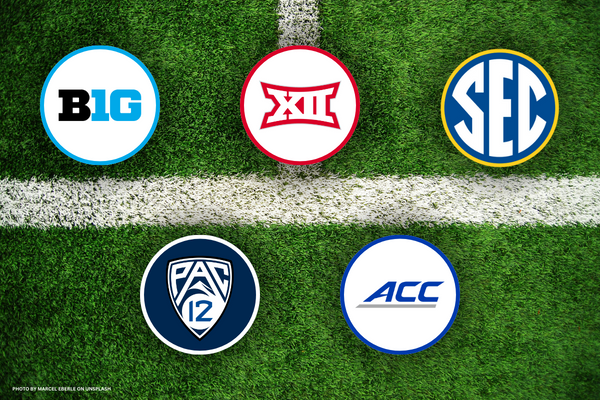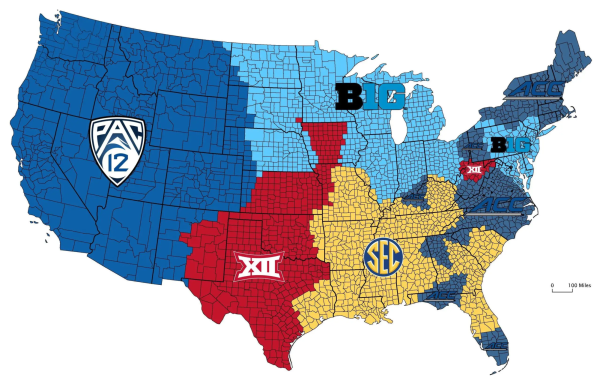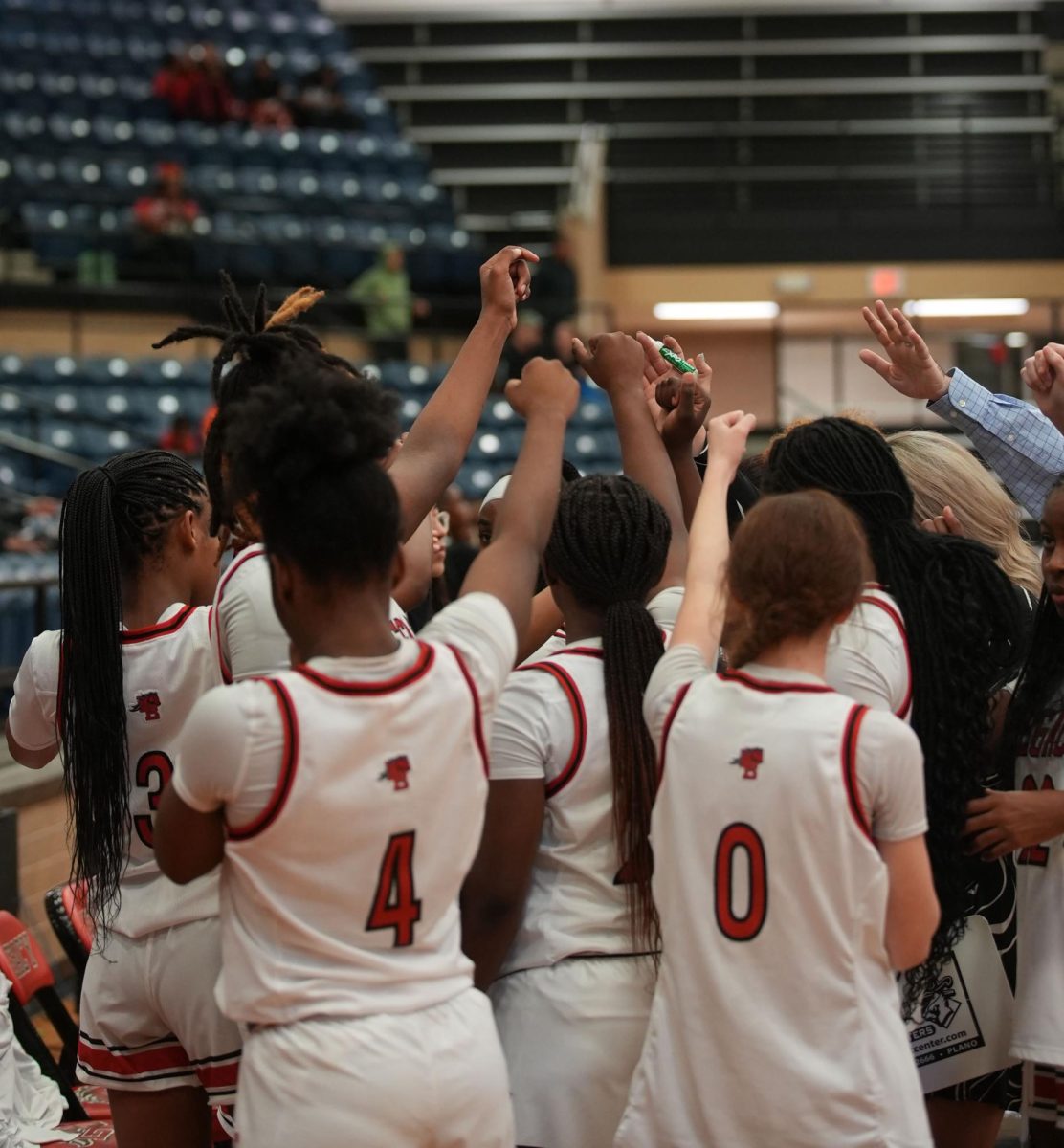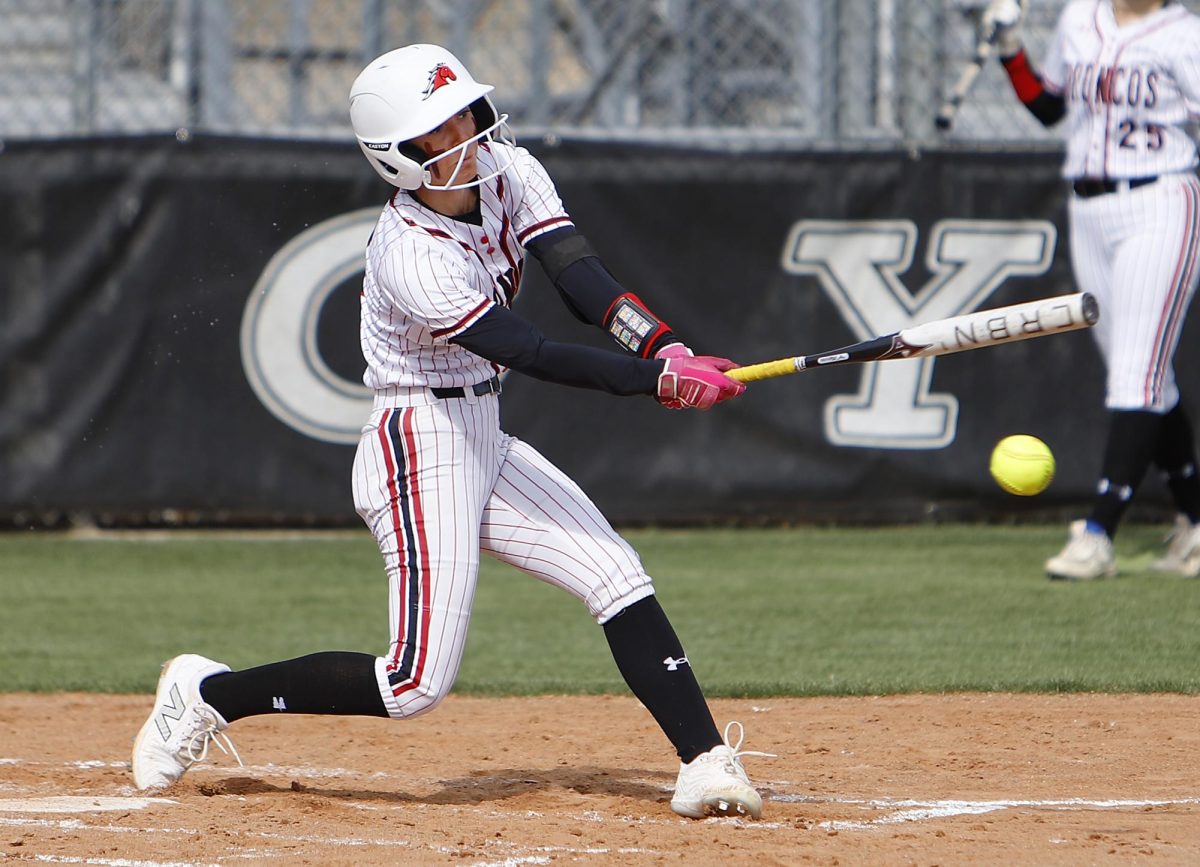
5. Pacific 12
In the 2023 season, the Pac-12 Conference includes Arizona, Arizona State, Cal, UCLA, Colorado, Oregon, Oregon State, USC, Stanford, Utah, Washington, and Washington State, but starting in the 2024 season, every team except for Oregon State and Washington State will not be competing in the Pac-12. According to sportingnews.com, the departures are due mostly to the fact that the Pac-12 has not agreed with a media or television company. Media contracts can be lucrative to conferences and the schools that participate in them. For example, the SEC signed a deal with Disney (ESPN and ABC) that will guarantee $3 million over ten years starting in 2024. In my opinion, the lack of urgency in finding a new media deal that is competitive with the other Power 5 conferences shows how the Pac-12 is not as dedicated to its member schools as it should be. The remaining schools in the Pac-12 are not very academically competitive, with Oregon State having an 89.2% acceptance rate and Washington State having an 86% acceptance rate. The Pac-12 ranks fifth on my list because all signs are pointing to there no longer being a Pac-12 conference after the 2023 season unless they can bring in some new member schools who are willing to not have much monetary gain or a larger media presence from joining the conference.
4. Atlantic Coast Conference
The ACC, or the Atlantic Coast Conference, includes Boston College, Clemson University, Florida State, University of Louisville, North Carolina State, University of Notre Dame, Syracuse, Wake Forest, Duke, Georgia Tech, Miami, Pittsburgh, Virginia, and Virginia Tech with Cal, Stanford, and SMU joining in the summer of 2024. The ACC did a good job of keeping schools on the Atlantic Coast (except Louisville and Pitt), until the addition of SMU, Cal, and Stanford. Although this won’t affect the schools on the East Coast, athletes at SMU, Cal, and Stanford will have to travel thousands of miles and through multiple time zones to play away games. In sports that play three-game series like softball and baseball, this obstacle could potentially be highly demanding for the athletes at those three schools. In my opinion, ACC teams are fairly competitive in sports other than football. The Duke and University of North Carolina men’s basketball teams are consistently on the hunt for a championship, and they are historically competitive every year. The legacies left by Duke’s Coach Mike Krzyzewski (Coach K) and North Carolina’s Roy Williams contributed to the program’s continued success. However, ACC teams in other sports are not winning as consistently as Duke and UNC men’s basketball. Florida State and Clemson’s football teams have periods when they are good, but they have not lasted as long as some teams in other conferences. Overall, ACC teams tend to make it decently far into the playoffs, but can not secure the championship as regularly as other conferences. According to on3.com, in 2022, the ACC generated $617 million in revenue. Even with this record-breaking number, they still ranked fourth of the Power 5 conferences in distribution. Each ACC school received approximately $39.4 million. Name, Image, and Likeness (NIL) deals have started to heavily affect recruiting and the caliber of players. I think it is widely known that other conferences such as the SEC have better NIL opportunities, which draws athletes away from coming to ACC schools. Compared to other conferences, the ACC has some of the most academically elite schools. According to univstats.com, the average acceptance rate of ACC schools is 30.04, with Duke and Stanford being the lowest at 5.9% and 3.9% respectively. The ACC ranks fourth on my list because although it is competitive academically, the lack of NIL opportunities and long traveling distances for athletes at Cal and Stanford could draw high-level athletes away from coming to ACC schools, and decrease their competitiveness in conference play and the NCAA playoffs.

3. Big 10
The Big 10 conference includes Ohio State, Illinois, Indiana, Iowa, Maryland, Michigan, Michigan State, Minnesota, Nebraska, Northwestern, Penn State, Purdue, Rutgers, and Wisconsin with UCLA, USC, Oregon, and Washington joining in the 2024 season. The Big 10 is in the same boat location-wise as the ACC. Most Big 10 schools are in the Midwest, except for UCLA, USC, Oregon, and Washington. Once again, this won’t bother a majority of the athletes in the Big 10, but it could be a problem for the student-athletes on the West Coast. The Big 10 is more widely competitive as a whole conference in men’s basketball than it is in other sports. During the 2022-23 season, eight Big 10 men’s basketball teams made it to the NCAA Tournament (Maryland, Illinois, Indiana, Iowa, Michigan State, Northwestern, Penn State, and Purdue). The Big 10 also has had football teams competing in six of the eight College Football Playoffs since its inception in 2014. Yahoosports.com reports that the Big 10 brought in $845.6 million in the 2022 fiscal year, and distributed $58.8 million to its member schools, except for Nebraska, Maryland, and Rutgers, who received slightly less. Even though the Big 10 generates the most revenue out of all the Power 5 conferences, its schools don’t receive as much attention as those in other conferences, and NIL opportunities are more plentiful for athletes in other conferences like the SEC. The average acceptance rate for the Big 10 schools is 52.61%, which ranks third in the lowest acceptance rates among all Power 5 schools. The Big 10 ranks third on my list because it is a fairly average conference across the board and its financial numbers aren’t reflected by the success of its programs.
2. Big 12
The Big 12 Conference (XVII) currently includes UCF, West Virginia, Cincinnati, Iowa State, Kansas, Kansas State, Oklahoma State, Oklahoma, TCU, Baylor, Texas, Houston, Texas Tech, BYU with Colorado, Utah, Arizona State, and Arizona joining in 2024 season. Texas and Oklahoma will be leaving the conference at the end of the 2023 season to join the SEC. The Big 12 used to be the most competitive conference, until the uprise of the SEC and Big 10. The last time a Big 12 team won the NCAA Football National Championship was in the 2005-06 season when the Texas Longhorns went 13-0 overall and had an 8-0 conference record. The Big 12 made $440 million during the 2022-23 school year, and each school received $44 million. According to heartlandcollegesports.com, the Big 12 has the most NIL compensation out of all Power 5 conferences, and once again, better NIL brings better players. The Big 12 conference has an average acceptance rate of 61.24%, with the lowest acceptance rate being The University of Texas at 31%, according to collegetuitioncompare.com. The Big 12 ranks second on my list because while it is not the most athletically elite conference anymore, huge NIL opportunities have the potential to turn the Big 12 back into the powerhouse it once was.
1. Southeastern Conference

The Southeastern Conference (SEC) includes Florida, South Carolina, Georgia, Tennessee, Vanderbilt, Kentucky, Missouri, Auburn, Alabama, Mississippi State, Ole Miss, LSU, Arkansas, and Texas A&M, with Oklahoma and Texas joining in the 2024 season. I think that the name “SEC” positively reflects the locations of its schools better than other conferences. The SEC only includes schools strictly in the southeastern United States and is divided into east and west divisions to help shorten travel times for athletes. To me, the SEC has pretty much dominated the competition in almost every sport. In the 2022-23 season, the SEC won the NCAA national championship in 12 of the 37 NCAA-recognized sports (Oklahoma won titles in softball and women’s gymnastics, Texas won titles in outdoor women’s track and field and women’s volleyball). According to cbssports.com, the SEC brought in $802 million altogether and distributed $49.9 million to each of its member schools during the 2022 fiscal year. Although the SEC didn’t generate as much revenue as the Big 10, it still has a slight monetary advantage. According to on3.com, the top 10 highest NIL earners in SEC football all have a value upwards of $700,000, and most SEC sports teams travel to away games by charter flights. The SEC does not necessarily have the best schools academically, but they tend to draw lots of attention from prospective students in the region due to their atmosphere and closeness to home. The SEC has an average acceptance of 57.72%, according to collegetuitioncompare.com. The Southeastern Conference ranks first on my list because it has the most competitive teams in generally every sport and it has ample opportunities for financial gain, which will continue to attract top-tier athletes and keep up with its athletic success.










Stiltner,Frank 2631 Club Ct • Mar 27, 2024 at 11:20 am
Good job, Riley your article was well written, and easy to understand. Thank you.